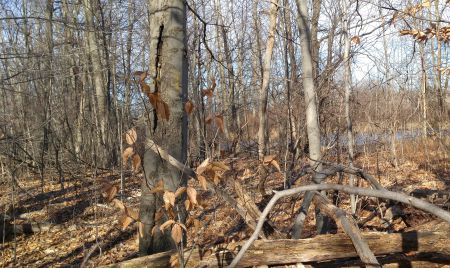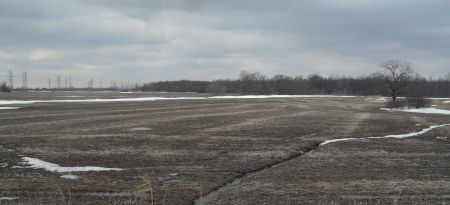
"Lost Resources equal lost jobs."
The following article was written by Dr. John Bacher of the Preservation of Agricultural Lands Society (PALS), and originally published on The Media Co-op.
Although not captured by the major news media, January 26 2017 proved to be a great day for stopping urban sprawl in the Niagara Peninsula and on the Niagara Escarpment. In the board room of the Niagara Escarpment Commission (NEC) in Georgetown and in the Hamilton Court House, important decisions were made to protect environmentally and agriculturally significant lands.
In Georgetown on January 26th the NEC - as part of its role in the process to amend the Greenbelt Plan (also as part of what is termed the Coordinated Review of four provincial land use plans) - acted in response to 62 proposed amendments to the Niagara Escarpment Plan. On the basis of recommendations from its planning staff, the NEC rejected all amendments that involved proposals to urbanize agricultural and natural areas.

While the proposed urban expansions were across the Niagara Escarpment, the most significant proposals were in the City of Niagara Falls, Niagara-on-the-Lake, and St. Catharines. It saw these municipalities and the Niagara Region oppose the Preservation of Agricultural Lands Society (PALS), and Niagara resident Jean Grandoni.
One proposed expansion UA01 proposed that 168 hectares of what is designated in the Niagara Regional Policy Plan as “Good Grape land" be urbanized. Another UAO4 originally recommended that 121 hectares of Niagara Escarpment forest lands be urbanized. When this proposal was finally rejected by the NEC on January 26th, it had shrunk to 17 hectares of forest on Glendale Road. An earlier proposal for what was caused a Site 2 expansion along Taylor Road had been withdrawn.

In rejecting the proposed expansions, the NEC endorsed criticisms of them by PALS and Jean Grandoni. Regarding UAO1, it noted how the need for any expansion of urban boundaries in the Niagara Region had been earlier rejected by an Ontario Municipal Board decision on March 20, 2015 regarding lands immediately to the south. In its decision, the NEC cited PALS’ conclusions regarding UA04 that it served to “seriously degrade the Niagara Escarpment wildlife habitat, with potential for impairing forest interior birds.”... Read more on The Media Co-op website.
The Niagara Escarpment is recognized as one of the world's unique natural wonders and is the most prominent topographical feature of southern Ontario.Designated a UNESCO World Biosphere,ReserveDésignation des réserves de biosphère de l’UNESCO in 1990, the Niagara Escarpment is an internationally recognized landform and is the cornerstone of Ontario’s Greenbelt. A landscape of rich biodiversity, home to hundreds of Ontario's Species at Risk, vital watersheds, agricultural areas and 450-million year old geological history, the Niagara Escarpment is a treasure to protect for future generations of Ontarians. Click here to read more about the Escarpment, the NEC, and the Niagara Escarpment Plan.
| Attachment | Size |
|---|---|
| 355.74 KB |
